History of De Soto
The prewar years of Chrysler’s oft-overlooked De Soto division
09/23/2018
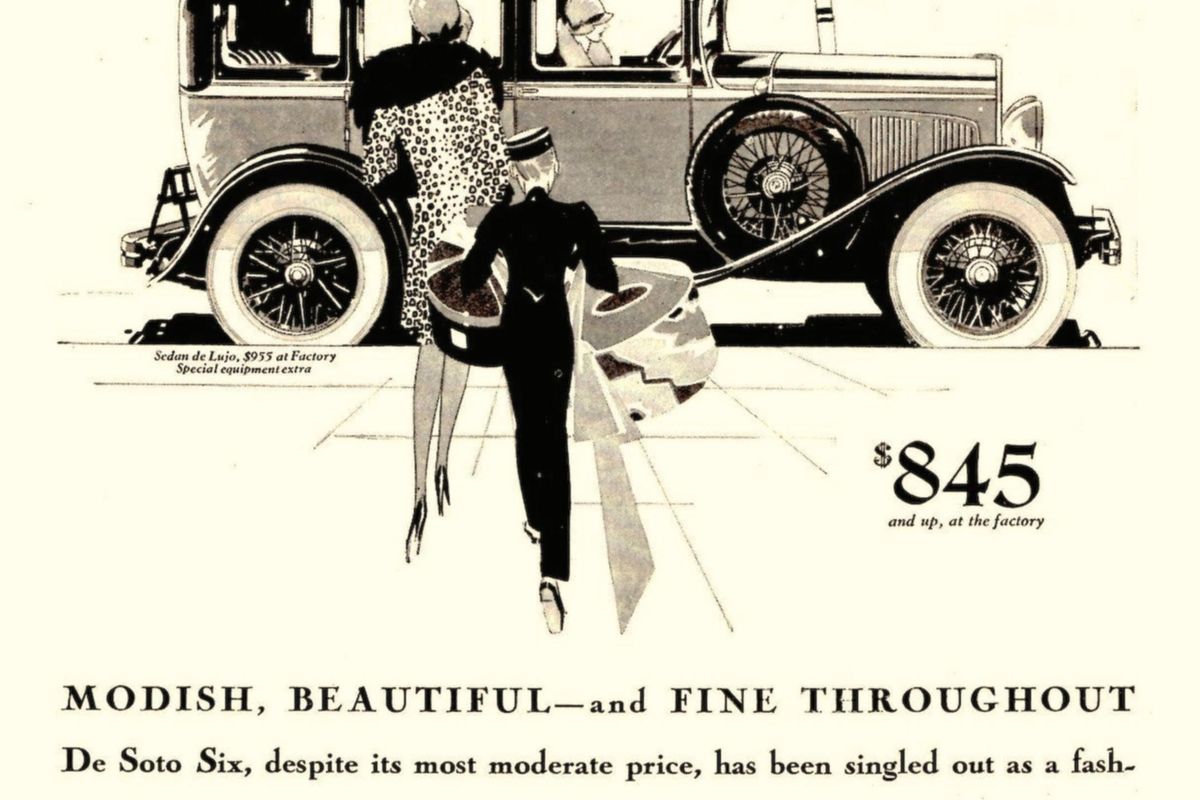

Poor De Soto—the go-along-to-get-along middle child of Chrysler's lineup. It started out as a Plymouth with more gumption, competed with its adopted sibling Dodge for attention, and allowed its individuality to shine in the Airflow days, only to wither back into a life of conformity once that route proved unpopular. De Soto has been gone nearly 60 years now—and is out of the living memory of a large percentage of American car enthusiasts, but that doesn't make the cars the company produced any less interesting today. And its prewar models, which are the focus of this story, were especially fascinating.
By 1928, just ahead of the Depression, Chrysler Corporation had a full-fledged multi-tiered automotive family: Chrysler on top, Plymouth to compete with Ford and Chevrolet in the low-priced field, and a pair of middle-market brands—Dodge and De Soto. The presence of two sister nameplates fighting for the same slice of the market wouldn't seem to make a lot of sense at first glance. Consider: Dodge was a strong seller by 1920, the year that brothers John and Horace Dodge both died. The Dodge company was sold to investment bankers Dillon, Read & Co. in 1925 for $146 million—the single largest cash deal in history at the time. Chrysler was interested in acquiring Dodge—in no small part for access to its facilities, factories, and dealer body—but was rejected. At that point, Dillon, Read still dreamed of merging Dodge, Packard, Hudson, and Briggs. But Dodge's sales were tanking, a move from four-cylinder to six-cylinder cars hadn't gone well, and in 1927 Dodge killed the Fours outright, replacing them with a lowerline Six. By the spring of 1928, Dillon, Read started talks with Chrysler—the only viable buyer—and sold Dodge to Chrysler late that summer.
This, it has long been rumored, is why De Soto was created in the first place, to fill the space between Plymouth and Chrysler when Dodge was out of reach. In May 1928, as Chrysler's talks with Dodge continued, the Detroit Free Press announced Chrysler's intention to build a new marque—De Soto—with a six-cylinder engine within the next quarter of the year. More than 500 dealers signed up to become distributors of the new midpriced brand, with another 1,000 dealers joining them by the end of the year. Production started in July of 1928, and De Soto set a record: 81,065 cars in its first 12 months—a record that stood for nearly three decades. Dodge, which started with similar pricing to De Soto, was brought in as part of the company by the end of August that year; Dodge offered more wheelbases, series, and engines to choose from, and was positioned above De Soto in Chrysler's hierarchy.
The De Soto marque was named for explorer Hernando De Soto, who led Europe's first expedition deep into America, covering more territory than any other explorer of the period (including parts of what are now Florida, Georgia, the Carolinas, Alabama, Tennessee, Arkansas, Oklahoma, and Texas; his name is attached to locations all over the Southeast). De Soto's travels contributed greatly to European knowledge of the New World; presumably it was the idea of such wide-ranging travel, intrepid adventure, and pioneering spirit that inspired the Chrysler brain trust to name their car for ol' Hernando.
Starting at $845, De Soto's debut model, known informally as the K-series, rode on a 109.8-inch-wheelbase chassis powered by a 55-hp, 174.9-cubic-inch straight-six. Chrysler trickled down some of its famed engineering prowess to the lower-line model, including Lockheed hydraulic brakes and an oil filter. All De Sotos offered a standard automatic windshield wiper, ignition lock, brake lamp, full instrumentation, steering hub controls for headlamps, and tool kit with grease gun.
Following the Spanish heritage of De Soto's namesake, the early model names were also Spanish. The Faeton (phaeton) took on an alternative spelling, as did the Cupe Business (business coupe). There was a sedan called Sedan—a name that translates across multiple tongues. There were de lujo, or deluxe, Cupe and Sedan versions. The five-passenger two-door sedan was called Coche (or "car"); the Roadster Espanol shouldn't need a translation.
For 1930, De Soto dropped all of the pretentious falso-Spanish naming, and launched the De Soto Eight, also known as the CF. The 207.7-cu.in. straight-eight put out 70 hp, and rode on a 114-inch wheelbase. "The world's lowest-priced Straight Eight" started at $965. The CF launched simultaneously with the eight-cylinder Dodge, though the Dodge's engine had a ¼-inch-longer stroke and five more horsepower. Later in 1930, De Soto replaced its original K-series six-cylinder model with the new CK-series, featuring a 109-inch wheelbase and a 60-hp 189.8-cu.in. straight-six— both shared with the Dodge Model DD. The CK started at $810, but Dodge's similar DD line tripled the CK's sales.
By 1931, the Depression was in full swing, but De Soto was still trying. In January of that year, De Soto reworked its entire lineup. The new six-cylinder SA had a new 205.3-cu.in. Six in the 109-inch chassis, while styling was tweaked gently, and the eight-cylinder line, known internally as CF, took on Dodge's 220.7-cu.in. straight-eight. With sales around 32,000 for 1930-'31, the halcyon days of the 1928 debut must have seemed very far away.
January of 1932 saw De Soto reinvent itself with a single new model, the Model SC. The SA six-cylinder was stroked to 211.5 cubic inches for 75 hp, dropped into a new 112.4-inch-wheelbase chassis (121 inches for the seven-passenger sedan), and secured via Plymouth's recently developed "Floating Power" rubber engine mounts. Furthermore, De Sotos no longer had shared styling cues: The SC was its own car. The eight-cylinder CF model was dropped, and De Soto wouldn't have another eight-cylinder in its line until the early 1950s. The SC was available in seven Standard body styles (starting at just $675) and five Customs, plus a chassis for coachbuilders. Custom models added body-colored fenders, dual wipers and taillamps, a cigar lighter, and more for between $60 and $100.
The SC's replacement, called SD, launched in December 1932. A 2-inch-longer wheelbase, a body-color grille said to be inspired by Miller racing cars, and body lines with a nod toward the Streamline Moderne trend all came along with the SD. Prices were cut: A standard sedan started at $665. Even so, sales remained a languid 23,000. The SD's gentle aero touches were not an accident. Chrysler's wind-tunnel engineers discovered that cars of the day were 30-percent more aerodynamic when the body was reversed. In a publicity stunt, driver Harry Hartz (who had amassed five top-five finishes at Indianapolis, including a trio of second places) drove a De Soto backwards across the country. Well, De Soto engineers reversed the controls and the ring gear, and Hartz used the rear window as a windscreen. But it was splashed all over ads of the period, and seemingly laid the groundwork for the future.
As the SD launched, the firm swapped De Soto's position with Dodge in the corporate hierarchy. Dodge was now slotted between Plymouth and De Soto, with De Soto below Chrysler; dealerships were organized as Chrysler-Plymouth or De Soto- Dodge. The gambit was meant to boost Dodge sales while De Soto, now a near-luxury marque, felt free to find its way, experiment with styling, and make itself stand out from the competition.
Everything changed for 1934 when Chrysler's revolutionary Airflow launched. Firsts included a space-frame-type body, an engine mounted atop (rather than behind) the front axle, a passenger compartment contained entirely between the axles rather than atop them, and styling designed to slice through the wind rather than fight it. A dealer training film suggested that the Airflow was "not hogtied to engineering tradition or artistic fetishes." It was a streamlined masterpiece: flowing aerodynamic lines replaced hard angles, skirts were inserted into rear wheel openings, front fenders were blended into the body, and headlamps were cleanly integrated. The upright radiator grille was banished, with a wider nose incorporating headlamps in its place. The steel body itself, minus hood, doors, and trunk, was welded into a single structure, making for a body 40 times more rigid than previous.
By moving the engine forward, the rest of the passenger cabin could move up a whopping 20 inches, allowing weight distribution to approach the ideal 50/50 ratio. This, in turn, allowed for a softer rear suspension, which improved ride and handling as there was less rebound motion transferred from the suspension through the cabin. Passengers, who were seated lower despite the Airflow's taller body, could ride more comfortably over the rough roads of the day, and could enter and exit more easily, too. In the industry's first two-row, six-seat interior, and with an ergonomically placed steering wheel and excellent ventilation throughout the cabin, the driver was also more comfortable. De Soto had only a 115.5-inch-wheelbase version for its shared dealerships with Dodge, with a 100-hp 241.5-cu.in. Six the only engine. Neither Dodge nor Plymouth received the Airflow; with a companion marque in the same store, they really didn't need it.
Airflow ended up being deeply influential—its engineering principles were widely adopted in the years and decades to come. Even Toyota copied the Airflow for its first-ever car, the AA of 1936. But there was one problem: Buyers stayed away in droves. For 1934, De Soto sold just 13,490 Airflows—an alarming 47-percent drop from an already-tepid 1933 sales year, taking De Soto from 10th to 13th place in the sales race. For 1934, the only De Soto you could buy was an Airflow; good thing dealers sold seven Dodges for every De Soto that year.
De Soto needed to do something, and quick. That something was the Airstream, a companion series to the Airflow. The 1935 Airstream was styled by Ray Dietrich, from the LeBaron coachworks, who joined Chrysler's design staff in 1934. Drawing on the 1935 Dodge and Plymouth coupe styling, they split the difference between Airflow-radical and a more conventional shape on a 116-inch wheelbase, just half an inch longer than the Airflow's. While Airflow sales slumped further in 1935, Airstream sales were robust enough to double De Soto's 1935 overall sales. For 1936, Chrysler expanded the number of Airstream models available: four DeLuxe and nine Custom models. Airstreams now rode Chrysler's 118-inch wheelbase, save for some high-zoot sedans on a 130-inch wheelbase. The Airflow, meanwhile, was pitched as the Airflow III, garnering barely 5,000 sales between the remaining coupe and sedan body styles. Calendar-year production rose to 52,789. The Airflow was put out of its misery at De Soto after a short 1936 year. One of the lessons management took away from its Airflow adventure: radical styling wasn't going to win any buyers. Not until Virgil Exner's "Forward Look" cars of the 1950s would Chrysler make a strong styling statement again.
For 1937, the Airstream name disappeared, 2 inches were sectioned out of the wheelbase (save for long sedans, which grew to 133 inches), and the engine was downgraded to a 228.1-cu.in. Six with 93 hp. Body shells were all-new too, though they didn't look significantly different than the previous season's Airstream. Sales rebounded to more than 81,775, and De Soto rose to 12th in the industry, ahead of Nash for the first time since 1933.
Model year 1938 marked De Soto's 10th anniversary. Changes were minimal: A new optional higher-compression engine made 100 horsepower, and the chassis was massaged to 119 inches between the wheel centers. To celebrate, the marque looked to the world of entertainment to help them get the word out on what was essentially a carryover car. Jack Dempsey, Eddie Cantor, Bing Crosby, Warner Oland (of Charlie Chan fame), Lowell Thomas, Janet Gaynor, Major Bowes, and even Robert Ripley (believe it or not!) appeared in color print ads. In these, the sedan was always bright red (not the darker hue found on De Soto's sparse paint chart), the celebrity always posed at the driver's door of a front three-quarter illustration of the car. Even with the star-powered assistance, De Soto couldn't quite touch 39,000 sales.
De Soto pulled out all the stops on the 1939 model—the one that ad copy would call the "Hollywood Style" De Soto. The new look wasn't really far off of the Airflow half a decade earlier— headlamps were now solidly encased within the fenders, and sedans were now full fastback models, with bustleback trunks replaced by aero-flush rear decks. The rest of Detroit had caught up to the Airflow, stylistically; what once was adventurously ungainly had proven its worth over time, as other car companies adopted its concepts. The 1939 De Soto's grille was extraordinary, taking up the bulk of the peaked nose as well as the space between the headlamps. The wheelbase remained at 119 inches (seven-passenger sedans were 136 inches), with a new double-drop X-girder frame underpinning the style. Handy-Shift moved the shifter from the floor ("no more Wobble-Stick!" claimed the brochure) to the steering column; it controlled a new "Synchro-Silent" three-speed with optional overdrive. Independent front suspension offered greater control and a smoother ride. A total of 54,449 De Sotos were built for the 1939 model year.
Changes to the 1940 model involved toning down the 1939's brightwork and switching to new federally mandated round sealed-beam headlamps—said to be 50 to 65 percent brighter than the 1939-style headlamps, according to period ads. The wheelbase grew again, to 122.5 inches, and rear windows were now a single piece of glass. The new All-Weather Air Control system allowed more fresh air, for greater passenger comfort. Engines, still 221.8 cubic inches, were now rated at 100 horsepower. Advertising shifted from Hollywood to the home, explaining how De Soto made an ideal family car. It worked. Sales around 65,600 looked good, considering the division's recent past, and may have been better had Chrysler not suffered a labor strike that year.
Model year 1941 was another all-new year for De Soto. New "Rocket" bodies (a name used by De Soto nearly a decade before Oldsmobile did) featured what would become a De Soto styling staple: the waterfall grille, stacked with tightly arranged chromed vertical bars. Just as important, a semi-automatic transmission called Simplimatic arrived on the De Soto option list, nearly eliminating the need for a clutch and, as the Simplimatic name suggested, made motoring far easier. Shared with Chrysler, Simplimatic was part of the De Soto lineup clear through 1953. De Soto leapt to 10th place overall, with a division-record 97,000 units for the year.
The 1942 De Soto's biggest feature was a new front-end design, featuring a full-width waterfall grille and hideaway headlamps the division called Airfoil Lights. Power was bumped to 115 hp, thanks to an overbore of the sturdy straight-six that displaced 236.6 cubic inches. The facelifted 1942 De Soto was destined to have a short shelf life. With America entering WWII on December 8, 1941, De Soto production crept to a halt on February 9, 1942. Fewer than 25,000 1942 De Sotos were built in the shortened production year. Once car production ceased, De Soto went to war. The factory built Martin B-26 Marauder fuselages, B-29 Superfortress noses, Navy Helldiver wings, and parts for both Sherman tanks and Bofors anti-aircraft weapons.
De Soto was a fighter by necessity. Whether it was for attention in the marketplace or against early perceptions as an upscale Plymouth, diminished expectations against other brands in the Chrysler family, the sales calamity of the Airflow, or WWII calling a halt on play just as De Soto got its magic back again, De Soto always had an uphill battle. Today, prewar De Sotos— examples from the marque's first 15 years of life—make for distinctive motoring. Brimming with style and technological advancements, yet sharing enough components with other Chrysler products that wear parts can still be located, a prewar De Soto is a car of particular interest for the active owner-driver—a car you don't see every day, one that's a cut above the fray, and one that even now can be driven and enjoyed without worry.
On this episode of Repair2Rev, join us as Riley and Dane share invaluable tips and tricks on tackling one of the most crucial aspects of vehicle maintenance: the brakes. From the essential do's and don'ts to the step-by-step process of replacing and upgrading front disc brakes, you'll learn everything you need to know to keep your ride safe and reliable.
As they move to the rear of the truck they delve into the intricate world of rear drum brake systems, demonstrating the art of rebuilding and restoring this often-overlooked component of classic trucks. And to ensure your truck stops on a dime, they'll wrap up the episode with a comprehensive guide to bleeding the brake system, leaving no stone unturned in their quest for peak performance. Knowledge gained here will help you find your bargain buy without the anxiety of lacking repair tips. Hemmings is the ultimate destination for finding your perfect ride. Head to Hemmings.com to register and start your search today.
The British motor industry is well represented on this week’s round up of successful sales on Hemmings.com. The strongest listing went to an LS V8-powered 1997 Land Rover Defender 110 custom that outperformed the market and looked to be able to well outperform a stock 110. A 1978 Aston Martin AM V8 found a new home via auction, the same fate experienced by a V12-powered 1972 Jaguar XKE Series 3 roadster. The original Jeep Grand Wagoneer was perhaps the first luxury SUV and the 1988 example sold on Hemmings.com featured low-mileage and excellent overall condition. There are few muscle cars are instantly recognizable as a Carousel Red Pontiac GTO Judge, like the 1969 model detailed below. Finally, we look at a restored 1913 Ford Model T Runabout sold from a Canadian-based collection.
For the week of May 12 through May 18, a total of 61 listings crossed the Hemmings Auctions block. Including Make Offer listings of previously ended auctions, a total of 40 cars were sold, resulting in a net 66% sell-through rate. An additional 29 cars were sold via direct Make Offer listings.
You can keep abreast of the latest consignments by subscribing to the daily Hemmings Auctions email newsletter.
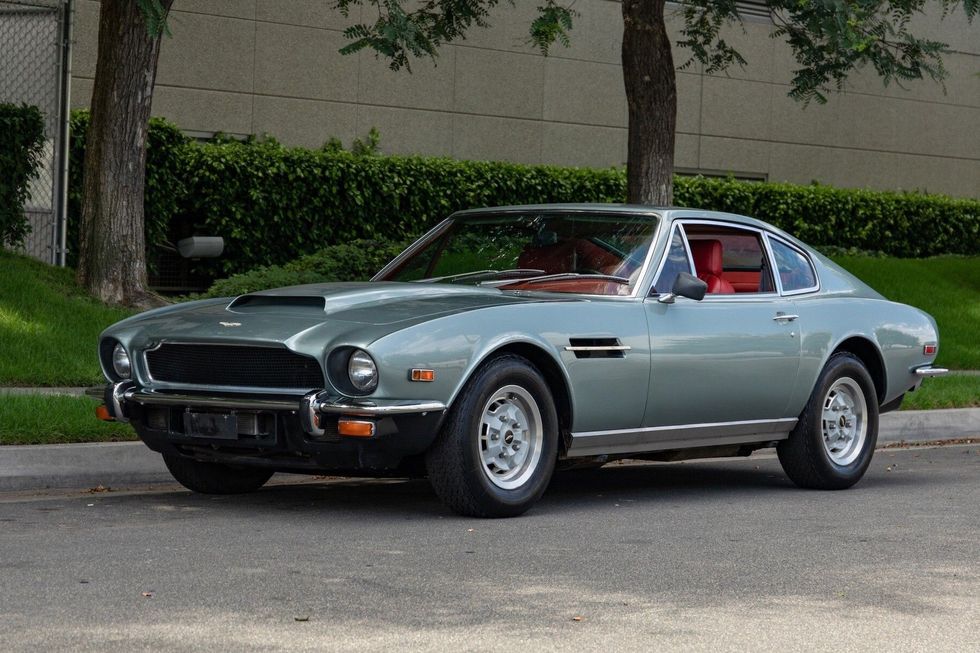
Reserve: $80,000
Selling Price: $84,000
Recent Market Range: $45,000-$80,000
Aston Martin produced some version of its V8-powered saloon from 1969 through 1989, though we are more likely to refer to the body style as a coupe on this side of the Atlantic. A beefy 5.3-liter DOHC V8 with multiple carburetors and a stout Chrysler-sourced TorqueFlite automatic very much gave the models a muscle car vibe, albeit one made with fine leather upholstery and thick wool carpets. This silver on red 1978 Aston Martin AM V8 Series III saloon, which traded hands last year via online auction for $46,988, achieved one of the highest prices seen in recent years for a coupe equipped with a standard-specification engine, particularly outside the U.K., where values are typically stronger.
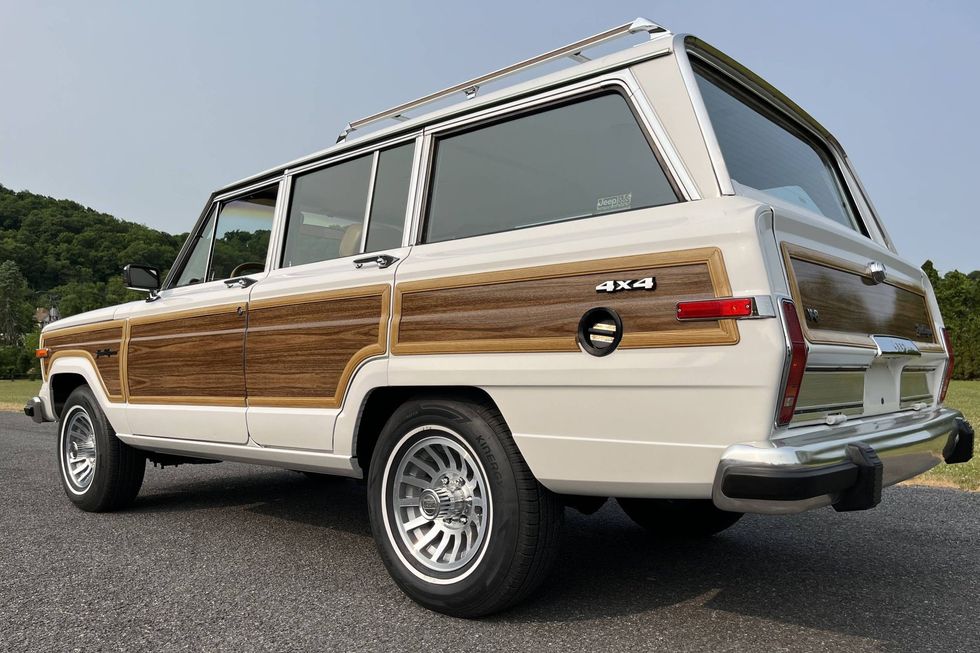
Reserve: $63,000
Selling Price: $68,775
Recent Market Range: $54,000-$75,000
Perhaps no other American vehicle has combined class and off-road capability quite like the original Grand Wagoneer, the trailblazing luxury SUV that was produced by Jeep for almost three decades. This 1988 Jeep Grand Wagoneer was submitted with just 27,417 miles showing on the odometer and plenty of notes from the seller indicating the original condition of the vehicle and all of its major components. The undercarriage, interior and engine bay photos all appeared to show an exceptionally clean example, which is notable for a rust-prone vehicle that has been in the Northeast since new. The net sale price, achieved with the 39th bid, was in line with market expectations for this very collectible vehicle.

Asking Price: $150,000
Selling Price: $157,500
Recent Market Range: $80,000-$150,000
The Land Rover Defender market shows no signs of slowing down, particularly as more and more examples are allowed into the U.S. via the DOT’s 25-year rule for previously banned imports. Likewise, there is a burgeoning market for what can best be described as restomodded examples, like this 1997 Land Rover Defender 110, which was powered by a modern GM LS3 V8, the same powerplant found in later C6 Corvettes. The list of what was original to this SUV might be shorter than what was changed, given the comprehensive nature of the build. Achieved via a direct Make Offer listing, the net sale price of this Land Rover was at the very top end of recent market activity for such customized Defenders.
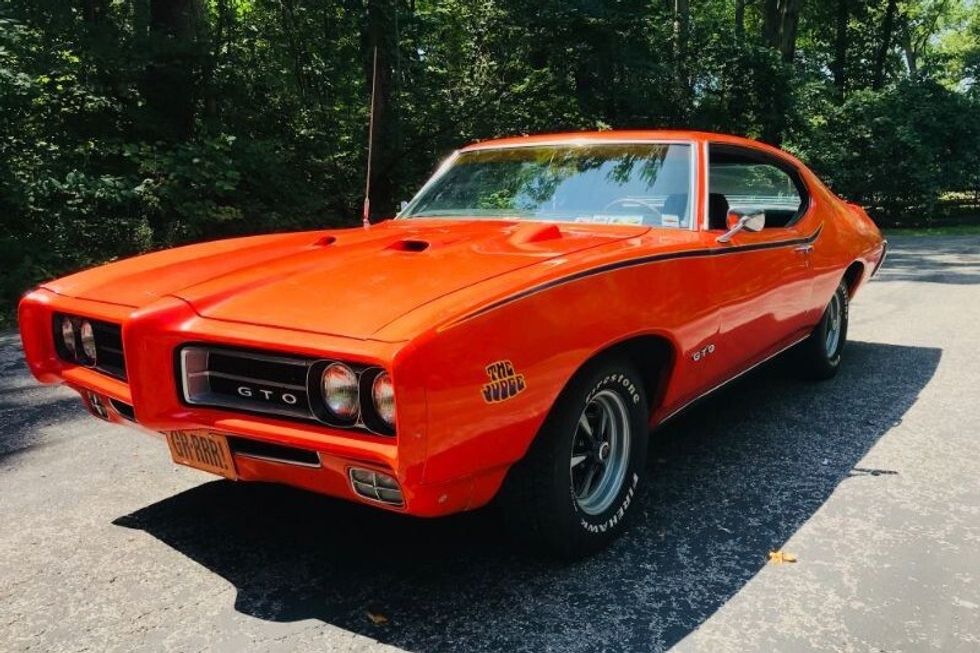
Reserve: $54,000
Selling Price: $52,500
Recent Market Range: $46,000-$62,000
This 1969 Pontiac GTO Judge ticked all the right boxes: matching numbers with photos verification of the partial VIN stamping on the engine block of the original Ram Air III V8, Muncie four-speed manual transmission, PHS documentation, and that classic Carousel Red finish and Judge decals. It looked to be in excellent overall condition, but it also appeared to have been driven and enjoyed some in recent years, with some signs of wear. And the net sale price, achieved via post-auction Make Offer listing, reflected the condition and authenticity of the car. A concours-level example, or one with a rare Ram Air IV engine for example, would likely command a premium over this one.
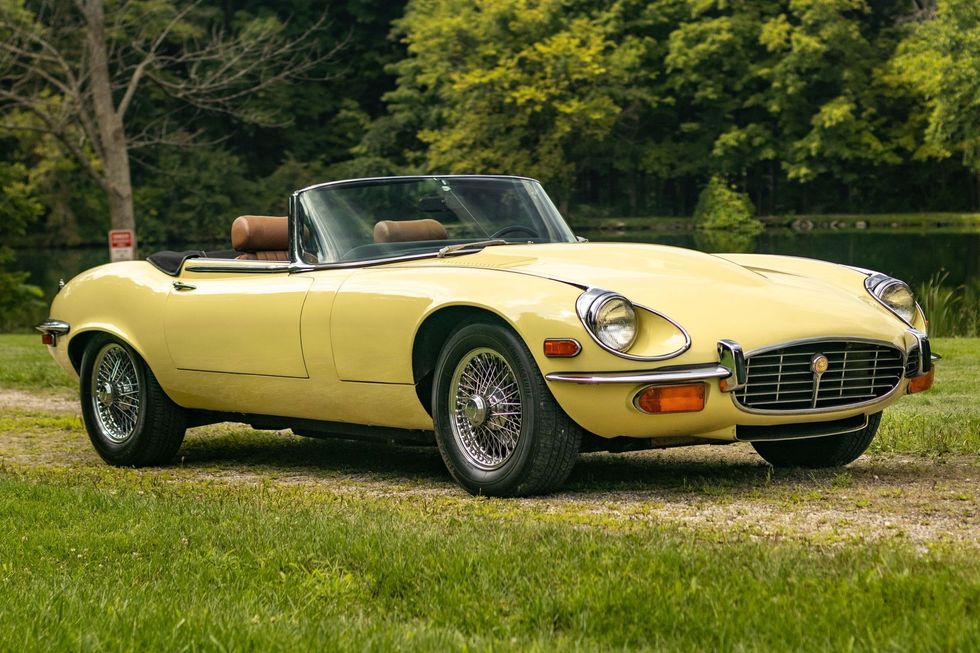
Reserve: $65,000
Selling Price: $69,825
Recent Market Range: $78,000-$115,000
The final iteration of the Jaguar XKE was a bit larger than the original and not as precisely focused on its sporting nature. Rather, with a big V12 under the hood, it was more of a GT car. This 1972 Jaguar E-type Series III Roadster appeared to have some minor wear and tear and signs of road use, but it made up for any shortcomings with what appeared to be an abundance of authenticity. The seller noted that the exterior finish, interior upholstery and engine were all original. Reflecting the low number of owners and the car’s years sitting in a museum, the odometer reading of just over 30,000 miles was also believed accurate. While the net sale price was below market expectations, it was not too far off.
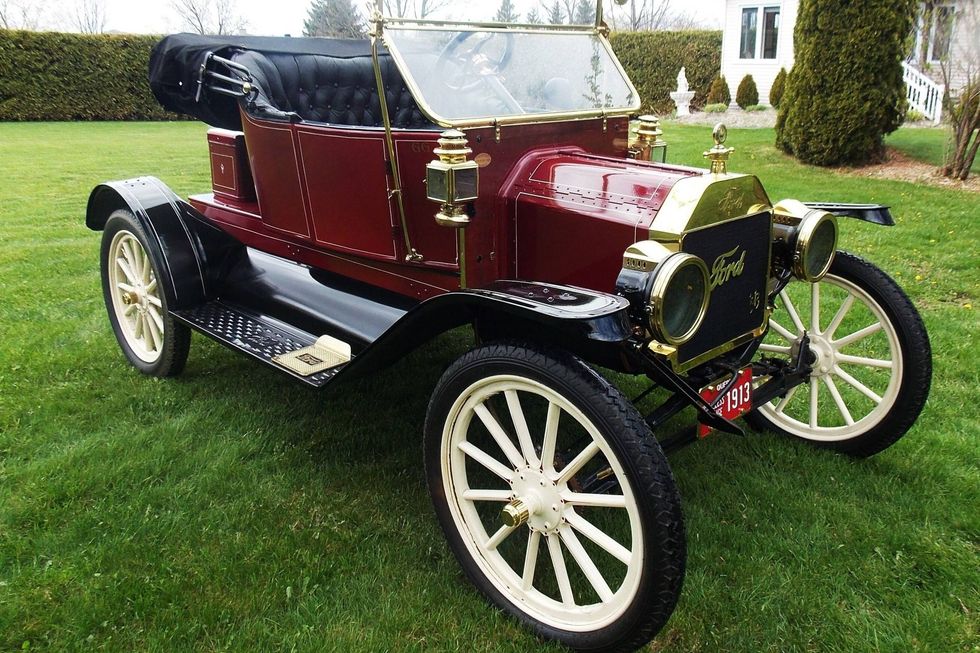
Reserve: $25,00
Selling Price: $26,250
Recent Market Range: $22,000-$36,000
There has never been a shortage of early Fords at Hemmings, dating to the earliest days of our magazine. Like any other vehicle, the most desired examples in the best condition will always attract the bidders. This 1913 Ford Model T Runabout appeared to have been restored to high level and showed only minimal signs of use. It was also equipped with an electric starter. The maroon body, black fenders and white spoke wheels nicely complemented the button-tufted black vinyl seat. The undercarriage appeared to be exceptionally clean, indicating little use for the car that was said to come from a Model T collection. The next sale price was well within the going market rate for an open-top, two-seat, early Model T.